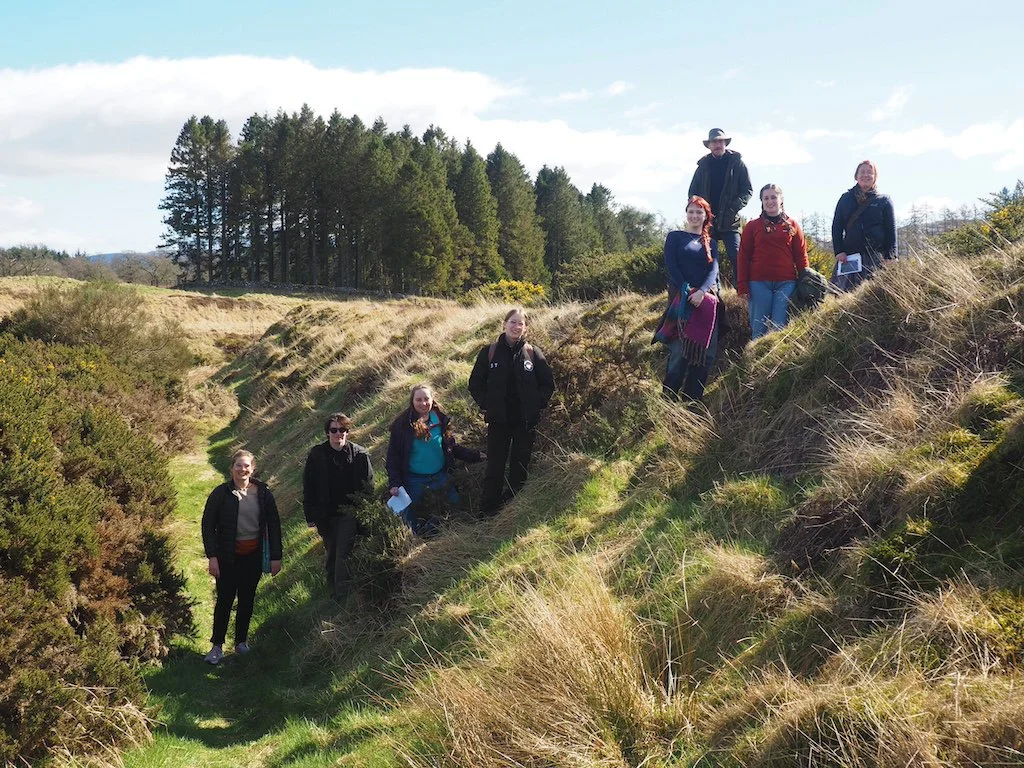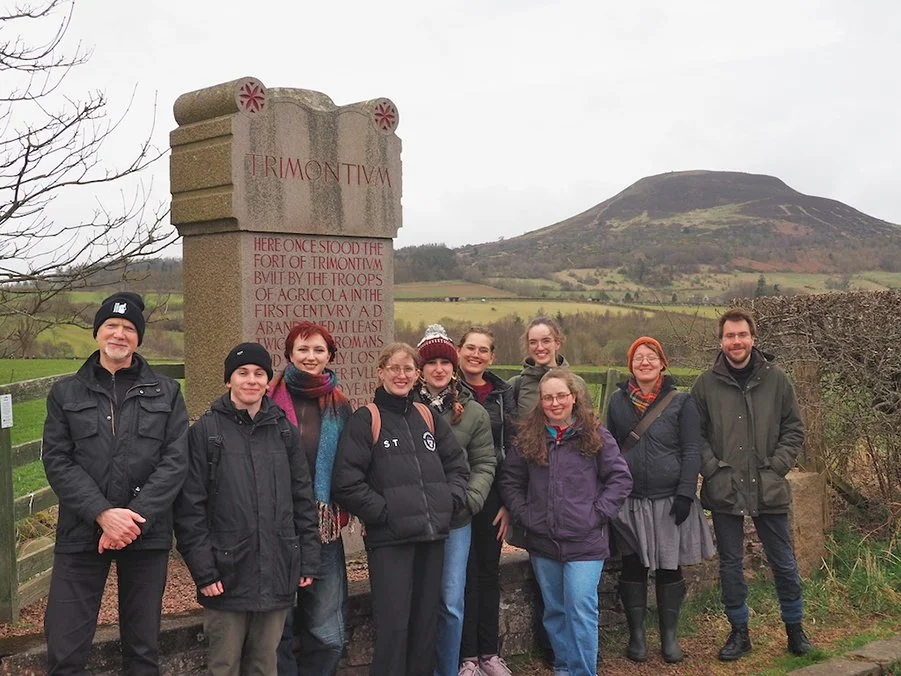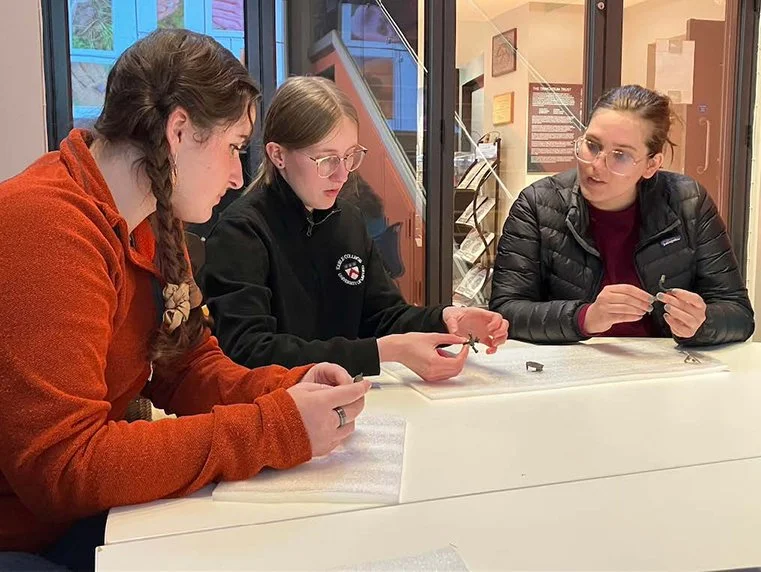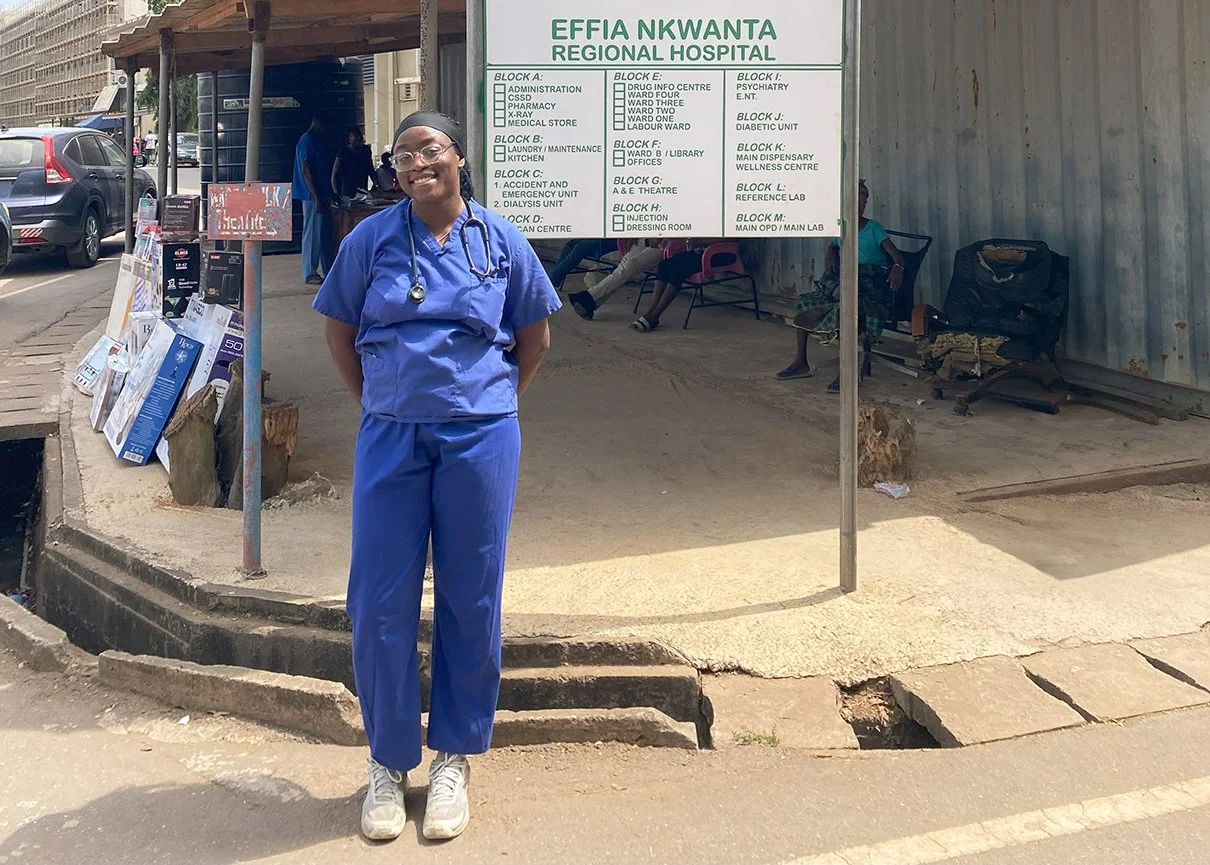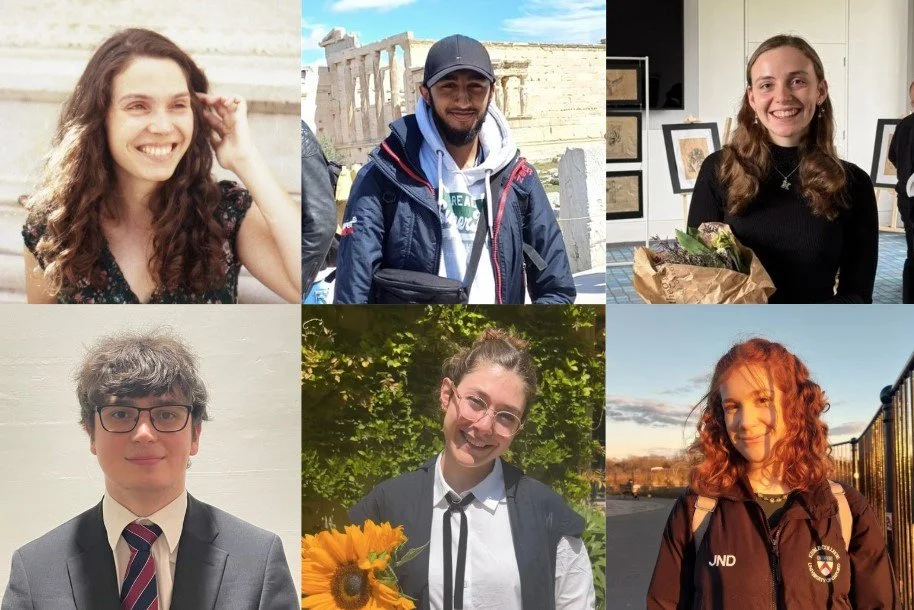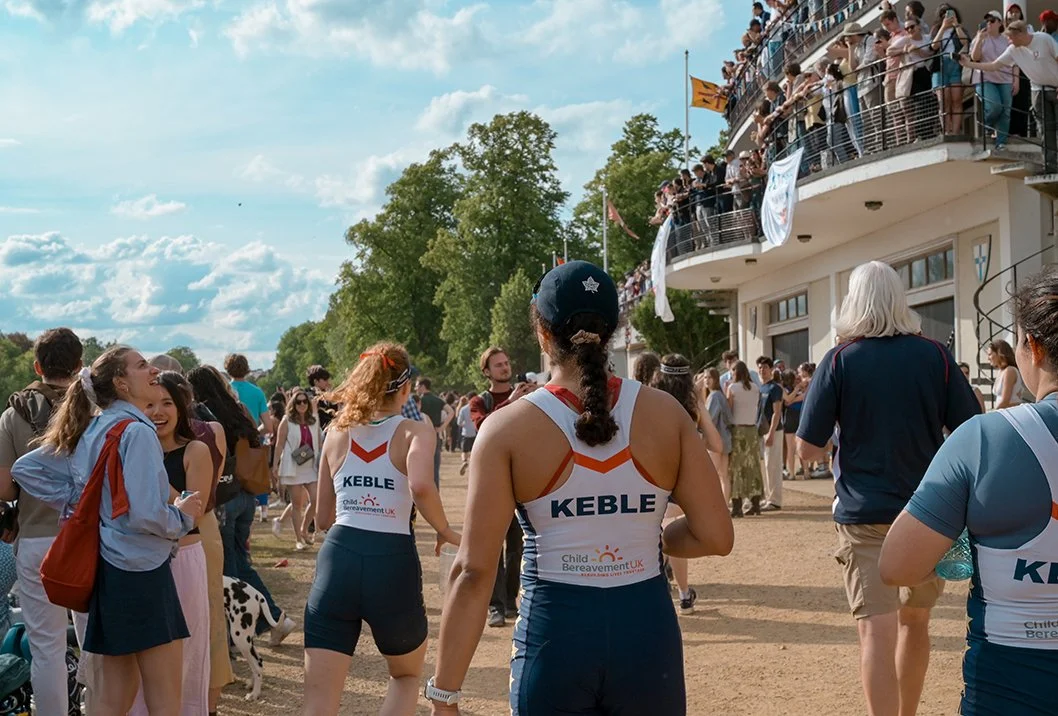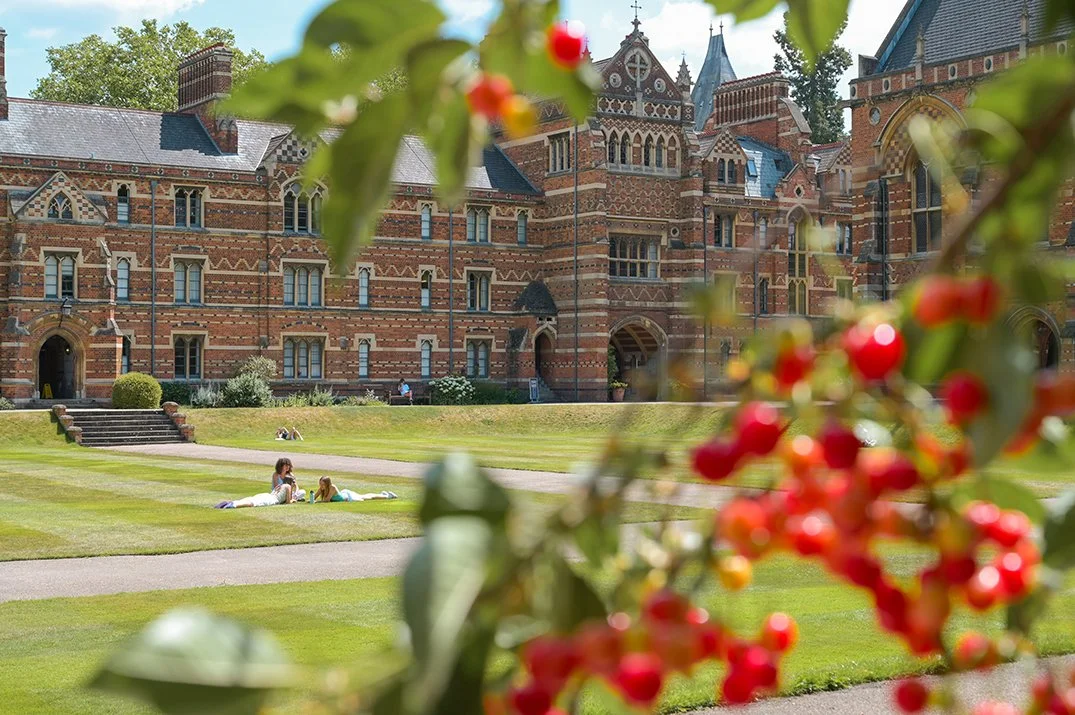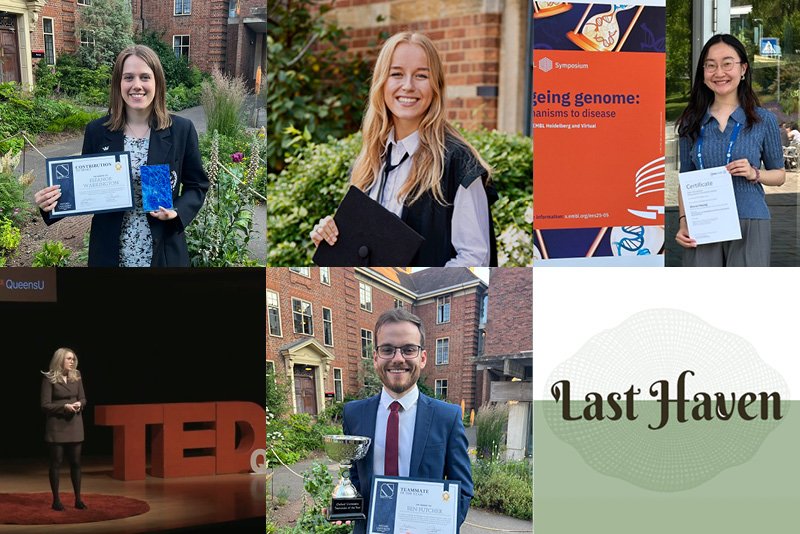Touring Northern Britannia
The group exploring the earth ramparts at Ardoch
Peter Haarer, Lecturer in Ancient History, writes:
At the end of March, an intrepid group of students studying the ancient world journeyed to the northern frontiers of Roman Britannia. During four action-packed days, we covered 1110 miles (roughly the same distance as between Rome and London), visiting as many sites as possible, and especially those otherwise unreachable without private transport and local knowledge.
At Trimontium
We set off from Oxford early on Friday 28 March and headed north to Melrose, turning onto Dere Street at Scotch Corner and stopping on the way at Roman Piercebridge and two Saxon churches (one at Escombe, the other at Corbridge) which are built out of stone re-used from Roman forts. As we neared the end of our journey, we enjoyed the low-glancing rays of the late afternoon sun which picked out in glorious detail the remains of Roman camps and other earthworks.
On the following day, we explored Roman Trimontium. This site now looks like a set of sleepy fields but the secrets beneath the surface (including the most northerly amphitheatre in the Empire) were brought to life through an informative guided tour and a chance meeting with a survey team who generously shared their latest findings with us. This was supplemented with a captivating Virtual Reality experience at the Trimontium Museum in Melrose where we also enjoyed a long, satisfying session handling artefacts recovered from the site (there is no substitute to holding an ancient brooch, or bead, or coin, or potsherd for appreciating the weight and feel).
Artefact handling
Sunday took us north of the Firth of Forth and first to Ardoch. Here, the fort from the Antonine Period (second century) has the best-preserved earth ramparts within the northern Roman Empire, but it partly overlies and is surrounded by several intersecting temporary camps of different dates and sizes which we enjoyed disentangling on the ground. After lunch, we stopped at Kaims Castle, a fortlet which forms part of a frontier system along the Gask Ridge dating to the 70s or 80s CE and claimed to be the earliest in the Empire.
The Gask Ridge frontier system is anchored to the north-east near Dunkeld by a massive fort at Inchtuthil, a site which is reached by a walk of nearly a mile down an obscure private road. This now forgotten field was picked by Agricola as the base from which to push deeper into Scotland and was designed to hold a legion; but troublesome Dacians drew resources elsewhere, 'project Caledonia' was cancelled, and the unfinished fort abandoned, along with strategic materials which were destroyed or buried on the spot, including over one million iron nails. Inchtuthil therefore has no overburden of later military or civil buildings and gives a rare glimpse into the architecture which accompanied the monumental machinery of conquest (and, in this case, its failure).
The temple of Mithras
On Monday, we travelled back to Oxford but not without taking the opportunity to pause at Hadrian's Wall. Time was limited, but we were able to take in a few short sections, visit the rare temple of Mithras, the adjacent fort at Carrawburgh, and, finally, Vindolanda. Here, we focused on the remarkable organic materials recovered from the site which range from the famous (the writing tablets) to the infamous (the only known Roman wooden toilet seat) to the intriguing (vast numbers of shoes, a sock, a wig, and much more). Tearing ourselves away, we eventually reached Oxford shortly before midnight, exhausted but enriched.
We are enormously grateful for the kind generosity of the alumni donors who made our study tour possible. We are also grateful to Dr Anna Blomley, who acted as tour manager and therefore allowed me to concentrate fully on driving us there and back in safety, and to Dr Jack Hanson, who joined us in Scotland and gave valuable insights into Roman Scotland.
What the students said:
"Some of my favourite parts of the trip were tutors pointing out all the subtle earthworks signifying sites all around the landscape. I also really enjoyed walking around the sites, imagining these not just as military residences or fortifications, but as complex settlements. The study tour was also a fantastic opportunity to meet with other archaeologists from Keble."
"I learnt a lot more than I would have done from lectures and tutorials alone. The experience has deepened my understanding of material for my course and, beyond that, informed my longer-term aims for a possible career in archaeology."
"In addition to the academic aspect, as an international student I welcomed the opportunity to explore the several different parts of the UK that we visited, and I feel that I now have a much richer appreciation for my new home. I am very grateful to those alumni who funded this trip."

